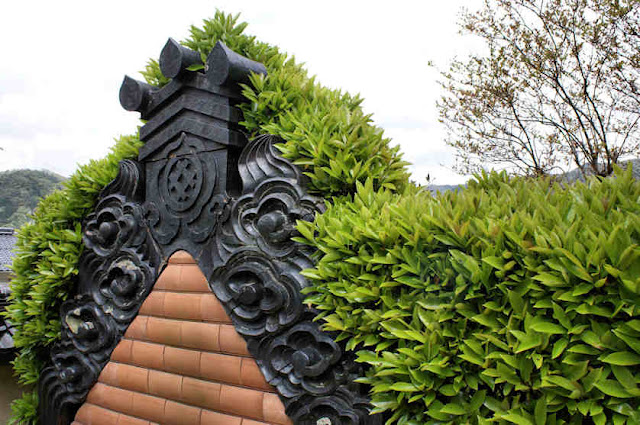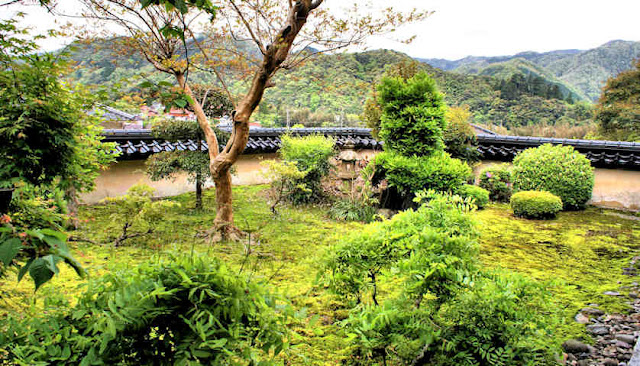The next temple on the Iwami kannon Pilgrimage is in Arifuku, up in the mountains, and so for a few kilometers I follow the very windy Yato River upstream.
It's a long and fairly steep climb up the valley, passing a small local shrine without any of the external trappings of a shrine other than a very small shimenawa
Not exactly sure what this barn/storehouse is used for but I find the small windows and two little doors quite intriguing.
I think this may have been the local Japan Agriculture Offices in the settlement of Nagatani.... official buildings, like police stations, schools, post offices etc in the early Taisho and Showa periods were built in this "western style". Since I took this photo, it has been demolished.
From Nagatani I head over the mountains to the next valley. This little shrine has always intrigued me as it is far from any settlements....
Dropping into the Uyagawa River drainage, abandoned farms are in the process of being reclaimed by nature...
About twenty years ago on my first walk here I noticed an old, rusty bus stop, so I am guessing that in the 50's, 60's, and maybe even the 70's there was a bus service here, but with a population that is now just a fraction of what it was then the area still survives but is in serious decline...
I believe this is called Hebiyama Falls, "Snake Mountain Waterfall"
I stopped in at one of the many abandoned houses....
This one has now probably conpletely collapsed and returned to the earth....
It is said that once abandoned a Japanese house will completely collapse in 25 years or less.... I have seen it happen to many since I have been here.....
Last typhoon season the Uyagawa River flooded seriously.... This was a new bridge from upstream....
These are a very common kind of commercial building from the early 20th century.... in Atoichi, which, like so many villages, used to have a wide range of shops... now the nearest convenience store is 6 kilometers away.
The previous post in this series on my walk along the Iwami Kannon Pilgrimage was on the
Zen temple Fukuoji.































































